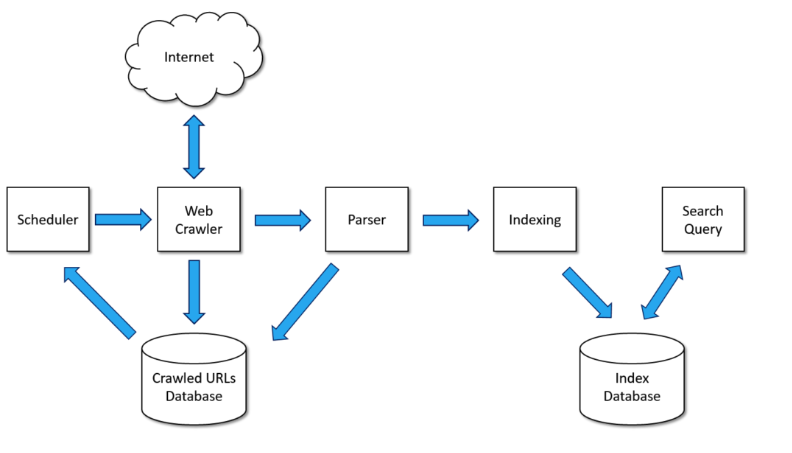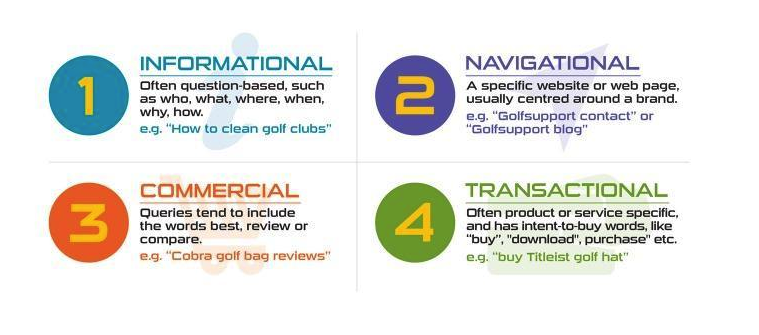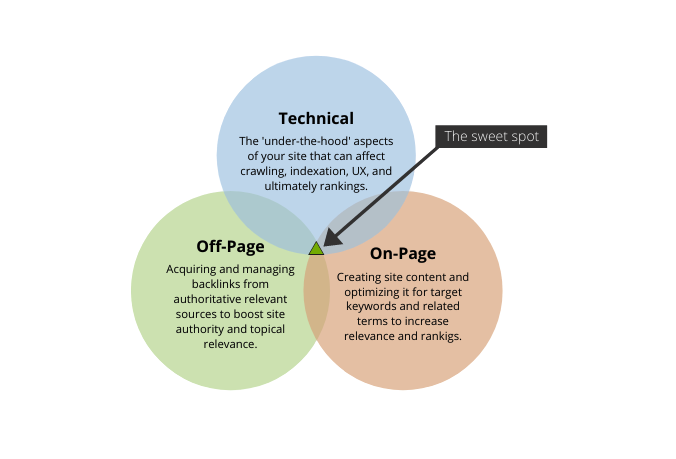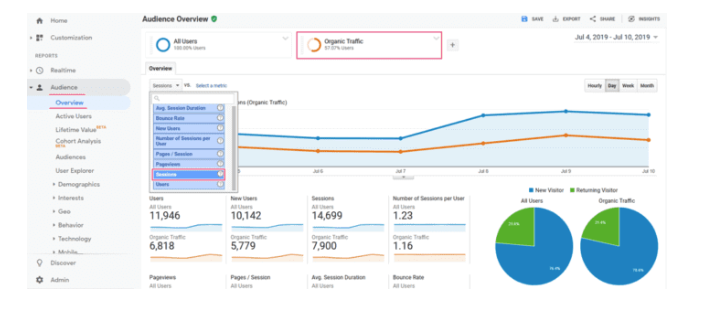Have you ever asked yourself, “What is SERP?” and How can search engines show you accurate search results quickly? Or pondered on the key to having your website reach the first page of those sought-after listings in search engine queries? Unlocking these secrets lies within understanding Search Engine Results Pages (SERPs).
Here, we will explore this domain, its components, and essential SEO practices that help websites soar.
Key Takeaways
- Understanding SERPs is Essential for Businesses.
- SERP Components Include Organic, Paid, and Featured Search Results.
- Optimizing SEO Strategies Can Help Increase Visibility on SERPs to Drive Organic Traffic.
Table of Contents
Understanding SERPs: The Basics

Search engines, such as Google, offer SERPs or Search Engine Results Pages to customers when they search for something. Through these results pages, users can access the internet and find what they need quickly and easily. Businesses also rely on this platform in order to reach their target market, so it is very important that businesses understand how SERPs work and know how to optimize them accordingly.
SERPS are composed of many different components including organic search engine results, the paid results, search advertisements, featured snippets, etc. To make sure that people only get highly accurate information every time a query is done. Various algorithms along with indexing processes have been put into place by these online platforms during its crawl process among other procedures used within the algorithm system behind searching websites like google.
What is a SERP?
When a user runs their query on the search engine, what they receive in return is called a Search Engine Results Page (SERP). These pages are for your reference. Feature various website links connected to the subject of google search results or inquiry. With Google SERPs, you may find seven or ten webpages relevant to your question and additional pictures for improved user experience.
An interesting element found on these types of result-pages are “People Also Ask” sections which showcase other related questions asked by searchers from time to time. When someone clicks on one of them, answers collected straight from google search and from different online sources come up as featured snippets, brief but comprehensive replies pointing out pertinent queries right away.
Importance of SERPs
It is essential to understand SERPs when optimizing your website for search engines, particularly with regard to Google. Ranking high in the results pages offers businesses a great way of reaching their target customers and that is why it’s so important.
SERP features can include videos, images, shopping recommendations, tweets or information cards providing search engine users with an engaging experience. Knowing how SERPs work as well as what types of listings appear on them will allow you to adjust your site accordingly. Resulting in higher positions among search results which then brings more organic traffic plus possible leads down the line.
SERP Components: Organic, Paid, and Featured

Understanding the components of SERPs is key for improving your website’s performance in them. These pages comprise organic search results that are generated by algorithms, as well as paid search listings which can be managed via Google Ads and featured snippets with extra information not connected to either the organic results or paid searches.
Organic Search Results
Organic search results are identified and given a ranking by the search engine algorithms based on their value and quality, which appears under any payment-based organic listings. Generating organic traffic without incurring costs makes it one of the best returns for website owners who invest time into optimizing elements like title tags, URLs slugs or meta descriptions to ensure visibility in Google’s end result display. Not only can this enhance relevance within organic searches, but also drive more people towards an individual site from such unpaid outcomes.
Paid Search Results
When a search query is made, paid ads appear at the top of the SERP. These are managed via Google Ads and based on a Pay-Per-Click system where companies can place bids to have their advertisements display for specific words. Factors taken into consideration by Google when selecting which paid advertisement will be seen first include bid amount, relevance to inquiry, quality of advertisement itself as well as page that users land on after clicking it.
A special type of paid searches (shopping results) present themselves in responses from transactional queries often appearing either right away or in the sidebar column with up to 8 examples of shopping ads per keyword listed there.
Featured Snippets and SERP Features
SERP features like featured snippet snippets, knowledge panels, local packs and image packs appear on search engine results pages to give users an extra layer of data beyond the standard organic and paid search outcomes. These elements are especially beneficial for answers to informational queries as they provide instant concise solutions without needing a click-through from the page. Studies now indicate that more than 50% of all searches end up with no clicks at all, thus making optimizing your content for SERP features essential in order to make it visible on these results pages and increase incoming organic traffic.
How Search Engines Generate SERPs

Search engine algorithms are fundamental in formulating SERPs. These intricate equations and procedures go through webpages, multimedia contents, data such as location and past searches to assemble the most pertinent results on the page. To guarantee exactness and relevance, search engines like Google also use indexing & crawling processes plus multiple ranking factors that decide which pages will be displayed first in the Search Engine Results Pages (SERPs).
Being aware of how search engines create SERPs is vital for maximizing your website’s performance and its rankings overall. By focusing on aspects that affect these algorithms – including excellent content quality. Mobile-first design. Page experience – you can elevate your site visibility amongst those SERP’s results thus increasing organic traffic. Too!
Search Engine Algorithms

Search engines use complex formulas and processes known as algorithms to decide the relevance of webpages in search results, taking into account various aspects such as query words, page usability and quality, source expertise along with user location and settings. These algorithms are continuously updated so that users get only relevant content on SERPs based on these factors – optimizing websites according to what affects search engine algorithms will help boost rankings & organic traffic.
Indexing and Crawling
Search engines use programs referred to as spiders or crawlers in order for them to access content from webpages during the crawling process. The indexing step follows, where search engine results are examined and arranged into a database that makes it easier to be retrieved when needed.
By optimizing your website technically with regard to its speed, structure and security. Not forgetting creating quality related content pertinent to your target audience/keywords – you can then raise the visibility of your website on SERPs (search engine result pages) while increasing organic traffic at once.
Ranking Factors
Search engines use ranking factors to decide the order of their search results. Factors such as providing great content, developing a mobile-friendly website and improving page experience are vital for better visibility on search engine results pages and driving more organic traffic. Optimizing technical details like site speed, structure and security, creating links with authoritative sources and forming relationships with influencers can also help increase your domain authority, which in turn increases organic traffic via improved rankings from these same search engine algorithms.
Types of Search Queries and Their Impact on SERPs

When it comes to optimizing your website, recognizing the different types of search queries and their influence on SERPs is essential. The three major varieties are navigational, informational and transactional. Navigational search terms typically contain brand names or distinct words with users wanting a precise webpage in view. In contrast, if someone wants to acquire knowledge about something, they would make an informational query which provides general information regarding certain topics. When deciding whether or not to buy anything online though. This necessitates customers carrying out a transactional request that includes specific item categories for potential purchase purposes.
By analyzing what type of search requests people utilize as well as how these affect SERP rankings, you can mold both content structure and SEO techniques towards user specifications leading to heightened visibility on SE results pages – plus greater likelihoods for driving organic traffic while acquiring new consumers/clients along the way!
Navigational Queries
Search queries that contain brand-specific terms or web page titles are referred to as navigational queries. These searches can be helpful for users who want quick access to a specific website or webpage and they often result in increased visibility of the site on SERPs. For example, someone might type “Apple” into their search bar if they need to quickly visit Apple’s homepage, while another individual could look up “Best restaurants in New York City” when searching for dining recommendations within the city. Navigational inquiries like these tend to have higher click through rates than other types of searches since people already know what information is being sought after in related searches before initiating them.
Informational Queries
Search engine results pages (SERPs) are valuable when trying to answer informational queries. Knowledge cards, which appear with SERP for such searches, can be particularly helpful as they provide extra information related to the query that was not immediately considered. If content is optimized specifically for these kinds of inquiries and features like knowledge cards, then it could result in more organic traffic being sent to a website via search engines.
Transactional Queries
When deciding to buy something, people often ask transactional queries with the highest revenue potential. Search engines include star rankings in their search engine results pages (SERPs) following these queries. And results containing four or five stars usually have more click through rates affecting customers’ purchase decisions. To be included as part of this reviews feature, webpages must showcase clearly visible ratings from users, which can then help boost website credibility in the eyes of potential buyers. Consider incorporating a plugin so customers may leave testimonials with a start rating that will ultimately increase visibility for your site’s SERP listing!
Optimizing for SERPs: SEO Strategies and Best Practices

To maximize your website’s SERP rankings, it is important to apply different SEO tactics and accepted practices. These comprise of on-page optimization, which consists in refining the content and HTML source code of a web page. Off-page optimization includes methods such as link building, social media marketing, and content promotion. Also technical SEO centering around improving the technological features of a site like its speed, architecture or security.
By concentrating on these strategies you can enhance your presence in search engine results pages boosting more organic traffic towards your site. In this article we will discuss this topic. Each method provides actionable advice for successful implementation for them all.
On-Page SEO
Optimizing web pages to rank higher in search engines and garner more relevant traffic is the goal of on-page SEO. This includes adjusting a page’s content, tags, links and other elements for better visibility with search engine algorithms. On-page SEO facilitates improved understanding by these software bots while also making it easier for visitors to use through increased relevance against queries from users.
When honing an existing or creating new website material this can involve changing titles & descriptions tagged within site code as well as editing images/video too. All done with keywords added throughout headings google images + body text plus internal linking work then help build organic traffic towards those specially optimized destinations!
Off-Page SEO
Off-page SEO is an essential component of a well-rounded search engine optimization approach. To increase the visibility on SERPs, it involves activities that take place outside one’s website – such as link building, social media marketing and other external influencers. The purpose of this technique is to give websites greater presence in rankings for better results and higher organic traffic flow from searches related to them.
To capitalize on off-page optimizations, you should emphasize techniques like acquiring quality backlinks, optimizing content specifically suited for popular platforms or harnessing relationships with influential people who will boost your domain authority over time – all contributing towards having more natural visitors coming into your site through improved rankings in these engines.
Technical SEO
Technical SEO involves improving the technical components of a website such as its speed, structure and security for it to be seen in search engine results. This type of optimization is essential for making sure that web pages are indexed, rendered and crawled accurately by search engines ultimately leading to improved organic rankings.
Imperative measures connected with technical SEO consist of submitting sitemaps into Google, creating an optimized site architecture as well optimizing loading speeds and eliminating errors from the page. By focusing on these tasks, you will improve your platform’s underlying technology, which could result in higher visibility within SERPs (Search Engine Results Pages) plus more organic traffic coming through to your domain name.
Monitoring and Analyzing SERP Performance

Tracking and assessing the performance of your website in search engine results is crucial for understanding its rankings. By keeping track of how it performs and analyzing that data, you can pinpoint what needs to be optimized to drive more organic traffic.
Several tools exist which allow one to monitor SERP standings as well as metrics needed for better comprehension of this information, allowing informed decisions towards improving SEO efforts. In the next sections we will discuss some key examples so you can gain some knowledge. Insights on effective tracking systems regarding a webpage’s presence on search engine pages.
SERP Tracking Tools
Software or web-based programs such as SE Ranking, SEMrush, Ahrefs and Accuranker enable users to observe how their website is ranking for certain search engine keywords. These tracking tools provide helpful data that can be used to evaluate the performance of a site in SERPs, recognize new trends and discern techniques that will help achieve more organic traffic. By utilizing these analysis platforms properly one has all the essential resources at hand needed to advance SEO strategies which should ultimately lead towards garnering greater organic online visitorship on your page.
Key Metrics
Monitoring and analyzing key metrics such video results such as organic traffic, keyword rankings, impressions, click-through rate, bounce rate, average session duration and new referring domains can assist in measuring the performance of a SEO campaign. This enables you to assess how your website is doing within search engine results pages, allowing for informed decisions about where improvements could be made to optimize it accordingly. The result? More organic visitors coming through from these SERP’s leading directly towards increased chances of converting them into paying customers!
In Closing
Ultimately, to optimize your website and increase organic traffic through search engines, it is key to have an understanding of SERPs as well as implement SEO strategies and techniques. Concentrating on technical, off-page, and on-page SEO combined with reviewing the SERP performance can help improve visibility in searches ultimately helping you reach potential customers online. Taking time to understand how SERPs work will be essential for reaching success so use this blog post’s knowledge constructively!
Frequently Asked Questions
What is an example of a SERP?
Search Engine Results Pages (SERPs) like the one on Google provide users with a plethora of options when searching for information. Its results page may contain Featured Snippets, Knowledge Panels and image packs. To the classic ten blue links. All designed to help people access related content quickly and easily.
What is different between SEO and SERP?
Through SEO, websites can gain better visibility in the search engine results and SERP (Search Engine Results Page) is what a query produces. In essence, this method of marketing works to raise a website’s standing on such result pages by making content more optimized as well as increasing page loading speed whilst also ensuring mobile compatibility.
Alongside these approaches, building links from other sites back to your own webpages will improve its credibility among search engines for improved standings within their results lists.
What is SERP used for?
Search engine results pages (SERP) provide users with a list of relevant and suitable search results for their query, making it easier to find the information they need. SERPs are an indication of web visibility, websites that rank higher will likely be seen more often by searchers thus increasing clicks on them.
To improve rankings on these pages, businesses focus on Search Engine Optimization (SEO), which includes optimizing content, faster page speed and being mobile-friendly so as to appear higher up in search engine results. By improving SEO tactics it is possible for firms to become increasingly visible when searches are conducted using keywords like ‘search query’, ‘search engine’ or even ‘search engine optimization’.
How do SERPs work?
Search engine results pages (SERPs) are an integral part of the online search process, offering users quick access to relevant information. When a user enters their query into a search engine such as Google, SERPs will display webpages that correspond with it along with other related content including images and videos.
By using appropriate keywords within website content, businesses can increase visibility in SERP rankings and draw more visitors to their site. Optimizing search features for pertinent key phrases is thus beneficial for driving traffic from these results pages.
What does SERP mean?
When using a search engine such as Google, users are presented with the Search Engine Results Page (SERP), which consists of organic and paid content like webpages, pictures, videos and other media. SERPs offer key information on what someone is looking for when conducting a query or inquiry online.
